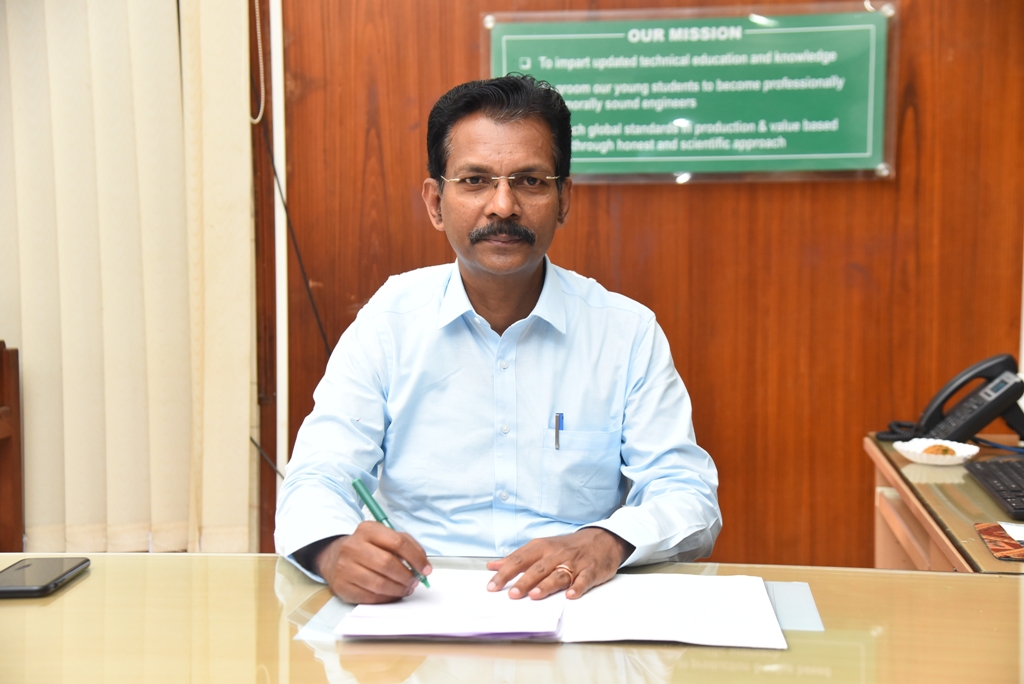INSTITUTIONAL VALUES AND BEST PRACTICES
Best Practice 1: Outcome-Based Education
1. Objectives of Outcome-Based Education:
- To design the program's curriculum framework and integrate well-defined Course Outcomes (COs).
- To use rubrics-based assessments.
- To ensure alignment between curriculum, instructional methods, and assessment practices to measure student attainment of outcomes effectively.
- To establish a quality assurance system and program improvement practices based on feedback from various stakeholders.
2. Context of the Best practice:
In the context of OBE, the process begins with defining vision and mission statements and developing Program Educational Objectives (PEOs), followed by developing Program Outcomes (POs) and Program Specific Outcomes (PSOs) according to Washington Accord guidelines. Then, a curriculum framework integrating well-defined course outcomes (COs) for each course is designed at the course level and mapped with one or more POs and PSOs to measure the attainment of these outcomes.
3. The Practice and its Uniqueness:
In the context of OBE, each course's curriculum and syllabus are designed to attain PEOs, POs, PSOs, and COs).
- A structured feedback mechanism involving faculty, students, alumni, subject, and industry experts regarding PEOs, POs, and PSOs has been established. This mechanism ensures the necessary revisions in curriculum and syllabi in relevance to technical and industry demands.
- An Internal Quality Assurance Cell was established for the periodic assessment of outcomes and to identify discrepancies for further improvement at the institute level, while the Program Advisory Committee (PAC) and Board of Studies (BOS) at the program level.
- The rubrics-based assessment practice is implemented to evaluate PO attainment.
- Student-centric methods have been established, such as NPTEL courses, industrial projects, internships, skill-based innovation courses, and student-centric learning infrastructures, such as Innovate TN and AR-VR lab.
4. Evidence of success:
- The evidence of success includes the integration of OBE into all programs in GCE, Salem. Workshops were conducted to enhance the participant's skills and knowledge in the OBE domain so that they could carry out all the activities for the OBE process. Additionally, most of the faculty members in this institution attended certified courses conducted by NITTT.
- The question papers are designed with CO and Bloom's Taxonomy.
- The academic performance trends between the two batches have highlighted both strengths and areas for improvement in the academic programs or student support mechanisms.
|
|
2018-2022 Batch |
2019-2023 Batch |
|
UG |
||
|
First Year |
77.52 |
71.30 |
|
Final Year |
98.00 |
99.39 |
|
PG |
||
|
First Year |
96.67 |
96.97 |
|
Second Year |
100 |
100 |
- The PO attainment level for all programs for the 2018-2022 and 2019-2023 batches is above the target level.
5. Problems encountered and resources required:
The main challenge faced by the institution was the adoption of faculty members to transition from traditional teaching methods to the OBE approach. The OBE approach requires the development of a new program curriculum, making all possible adjustments in existing courses, and introducing new courses with well-defined course outcomes, which, in turn, are to be mapped with PEOs, POs, and PSOs. To overcome this, workshops and seminars were organized to help them understand and effectively implement the principles of OBE.
Additional Information:
https://gcesalem.edu.in/sites/gcesalem.edu.in/files/uploaded%20files/BEST%20PRACTICE%20-1%20OBE.pdf
Best Practice 2: Clean and Green Campus
1. Objective of the practice:
To promote a sustainable environment by implementing effective waste management, energy conservation, sustainable resource use, and afforestation initiatives.
2. The context:
GCE Salem faced a significant challenge in maintaining sustainability across its 162-hectare campus while promoting green initiatives. Higher education institutions play a vital role in contributing to the Sustainable Development Goals (SDGs) through environmental disclosures. To address this, an environmental club involving faculty and students has been established to focus on energy, water, and waste management.
3. The practice:
- The institution follows the Miyawaki method, which involves selecting appropriate native tree species, involving the college community in planting activities and ensuring the long-term care and expansion of these green areas. On request from the principal, the Tamil Nadu Forest Department planted 7810 trees of 21 different varieties under the TNRSP-II scheme at the campus.
- Bicycles are encouraged for mobility within and near the campus.
- Roads inside the campus are well-maintained. Pedestrians can walk safely through the campus, and heavy vehicles are restricted from entering.
- LED lights are installed phase by phase on campus, which can reduce energy consumption.
- The college has implemented compost pits at strategic locations to manage waste effectively. Food waste from the hostel is collected daily through auctions and used for cattle feed. A Biogas plant with a capacity of 200kg has been initiated in hostels.
- Minimal wastewater produced in departments is disposed of through the groundwater passage.
- Wastewater from hostels is passed to oxidation ponds, where microorganisms in the water convert it into harmless by-products (Microorganisms present in the water, including bacteria and algae, convert it into harmless byproducts like carbon dioxide and water).
- For effective water management, the college employs
- Rainwater harvesting
- Bore well /Open well recharge.
- To Promote Sustainability, the following green techniques have been adopted such as solar energy-based street lighting system, water heating system for the hostel, and automatic sensor-based water overflow indicator for the water tank.
4. Evidence of Success:
- The use of LED bulbs and solar street lighting inside the campus reduces energy consumption.
- The awareness program has resulted in the development of a green, plastic-free campus and the use of cloth banners in all college functions.
- Environmental and energy audits are conducted regularly.
- The institution received the Best Green Campus Award in 2022.
5. Problems Encountered and Resources Required:
As the college campus spans over 162 hectares, transforming it into an eco-friendly campus requires more funds and manpower.
Additional Information:

